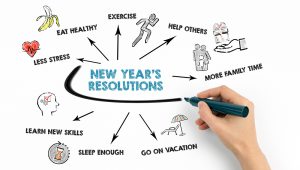
And the next night, and every night after that, with these four easy steps.
Want to boost your immune system, feel sharper at work, and keep off unwanted pounds? (Don’t we all!) Here’s some great news then: Getting a good night’s sleep can help us do all this—and more. The catch (why is there always a catch?) is that most of us don’t get nearly enough shut-eye each night. Sleep and medical experts say we should aim to get seven to nine hours of solid pillow time each night, but according to a recent Gallup poll, 40 percent of us come up short. If you’re one of the sleep-deprived, here are four no-nonsense ways to get the rest you need to be your best.
Calculate your caffeine cut-off time. A steaming cup of joe might give you a quick boost in the morning, but it generally takes a whopping 10 hours to clear your system. And trying to sleep with caffeine coursing though your veins is no easy task. If you’d like to hang onto an afternoon cuppa, count back 10 hours from your anticipated bedtime and you’ll have your caffeine cut-off time. (For most of us that will be somewhere around 1 or 2 p.m.) Keep in mind that coffee isn’t the only culprit. Caffeinated soda, energy drinks, tea, and even chocolate can also keep some people buzzing.
Make a new dinner plan. Sure, you’ve heard that late-night eating can be bad news for your waistline, but have you heard it’s not great for your sleep? It takes the body about four hours to digest a meal, and if your stomach is churning when you lie down, it will be harder to fall asleep. If your commute allows, try to move up suppertime to give yourself time to digest completely. If an early dinner isn’t practical, aim to have a lighter evening meal.
Hit the off button. We’re guilty of checking work e-mails and catching up on Facebook in bed too. But staring at your tablet or smartphone is just as disruptive to sound sleep as channel surfing before bed. Instead of calming the mind, you’re revving it up with information and (probably) more things to worry about. Read a book or listen to music instead. Jim Perkin, a business executive in Allentown, Pennsylvania, likes to use the last minutes of his day to, well, daydream. “I focus on a peaceful, relaxing topic,” he says, “like golfing or lying on the beach.”
Cool down. We’ve saved the easiest sleep habit to adopt for last: Lower the thermometer. The ideal room temperature for falling asleep is about 65 degrees F. This helps decrease core body temperature and prompts drowsiness. When it’s not possible to turn on the air conditioner or lower the heat, try this trick: Wrap a frozen gel pack in a towel and slip it inside your pillowcase before bed. You don’t need to place your head directly on top, but researchers say that cooling the head promotes falling asleep just as well as cooling the entire body.
 Mindful Sodexo
Mindful Sodexo 



0 Comments